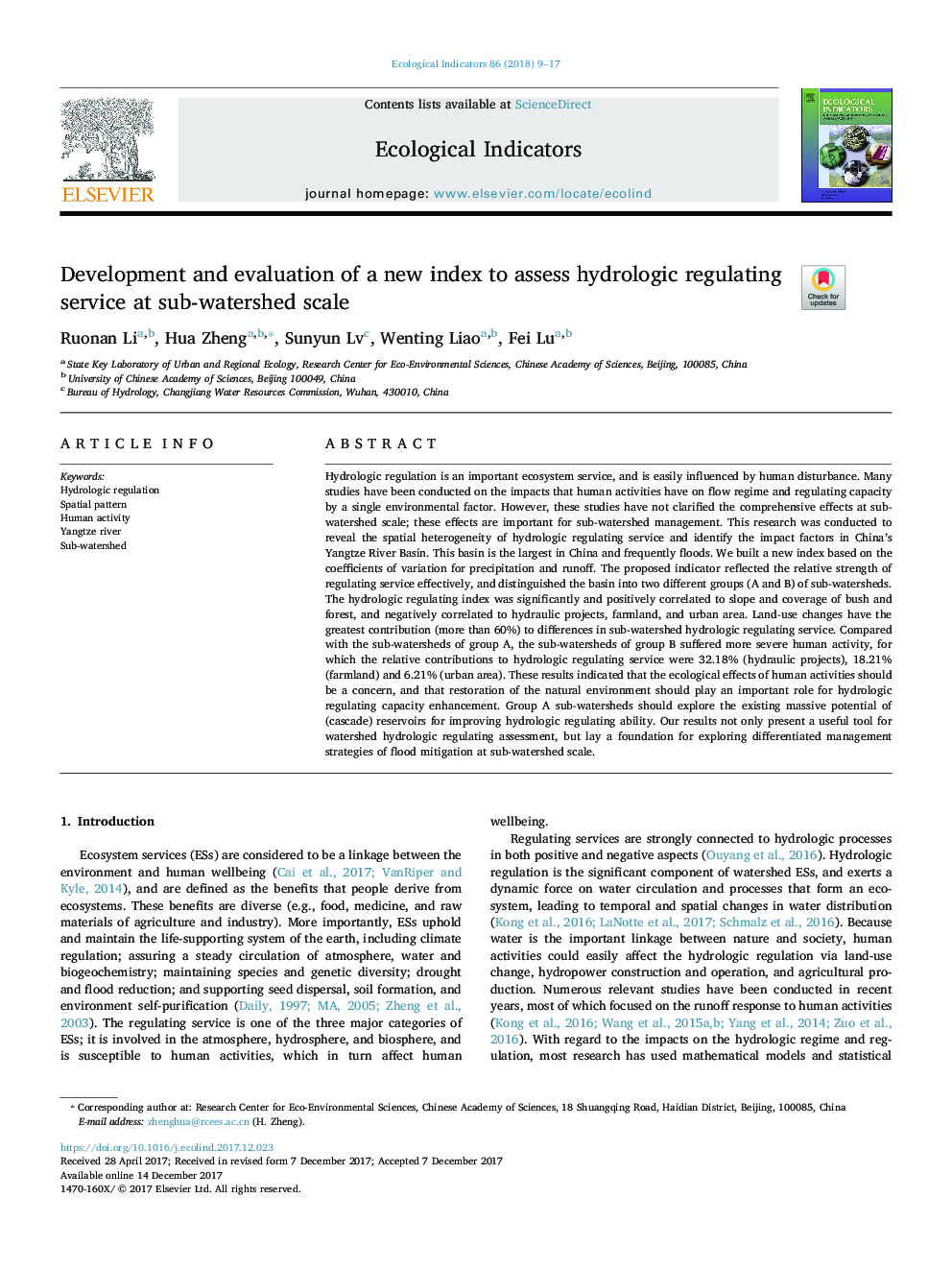| Article ID | Journal | Published Year | Pages | File Type |
|---|---|---|---|---|
| 8845611 | Ecological Indicators | 2018 | 9 Pages |
Abstract
Hydrologic regulation is an important ecosystem service, and is easily influenced by human disturbance. Many studies have been conducted on the impacts that human activities have on flow regime and regulating capacity by a single environmental factor. However, these studies have not clarified the comprehensive effects at sub-watershed scale; these effects are important for sub-watershed management. This research was conducted to reveal the spatial heterogeneity of hydrologic regulating service and identify the impact factors in China's Yangtze River Basin. This basin is the largest in China and frequently floods. We built a new index based on the coefficients of variation for precipitation and runoff. The proposed indicator reflected the relative strength of regulating service effectively, and distinguished the basin into two different groups (A and B) of sub-watersheds. The hydrologic regulating index was significantly and positively correlated to slope and coverage of bush and forest, and negatively correlated to hydraulic projects, farmland, and urban area. Land-use changes have the greatest contribution (more than 60%) to differences in sub-watershed hydrologic regulating service. Compared with the sub-watersheds of group A, the sub-watersheds of group B suffered more severe human activity, for which the relative contributions to hydrologic regulating service were 32.18% (hydraulic projects), 18.21% (farmland) and 6.21% (urban area). These results indicated that the ecological effects of human activities should be a concern, and that restoration of the natural environment should play an important role for hydrologic regulating capacity enhancement. Group A sub-watersheds should explore the existing massive potential of (cascade) reservoirs for improving hydrologic regulating ability. Our results not only present a useful tool for watershed hydrologic regulating assessment, but lay a foundation for exploring differentiated management strategies of flood mitigation at sub-watershed scale.
Related Topics
Life Sciences
Agricultural and Biological Sciences
Ecology, Evolution, Behavior and Systematics
Authors
Ruonan Li, Hua Zheng, Sunyun Lv, Wenting Liao, Fei Lu,
